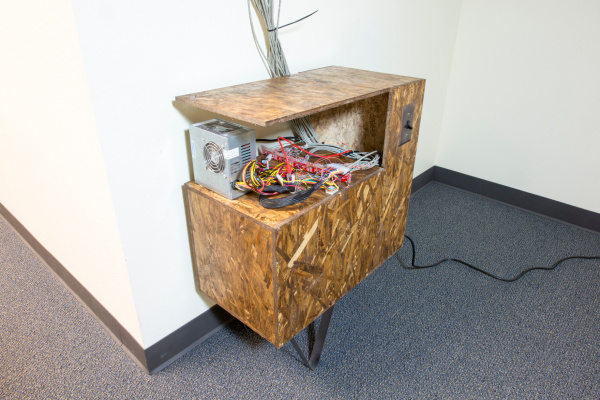Interactive Hanging LED Array
Everything's Under Control
There are a lot of ways to control a whole heap of LEDs. Multiplexing is a nice way to conserve GPIO, but even if you multiplex 72 LEDs you still need 9 pins to do it. I really wanted to use an Arduino Pro Mini for my controller, however that didn't leave many pins open for sensors and other fun stuff. A couple of shift registers would be a decent way to individually control all of the LEDs if all I wanted to do is turn them on or off. I really want varying levels of brightness, though.
In the end, the best tool for the job was the TLC5940 PWM Driver. The TLC5940 is capable of running 16 channels of PWM at a resolution of 12-bits! That's 4096 levels of brightness! Best of all, they can be daisy-chained together so that it takes the same amount of IO pins to control 16 LEDs as it does to control 72. I simply soldered 5 of our TLC5940 breakout boards into a line and connected each LED to its very own PWM channel.
Doing all of the computation for this installation was the Arduino Pro Mini. This is my favorite Arduino board because of its compact size, not that I really needed to save space, but I had a few of these hanging around. I went ahead and soldered right-angle headers onto the board for an FTDI, which I ended up leaving connected in the enclosure.
Powering the operation was yet another challenge. Some things wanted 3V, some wanted 5V and I needed enough power to light 72 super bright LEDs at once. There was really only one tool for that job, and it's the good old computer PSU. Power Supplies from old PCs make excellent voltage sources for projects like this because they're self-contained, regulated, and can source quite a bit of current. They also output all of the common voltage levels you'll need: 12, 5 and 3.3VDC! To get a PSU to run without being connected to a motherboard, you'll need to find the enable wire and tie in to ground. Usually it's the green wire in the large connector.
All of the power and control components needed a place to live, so I built a simple cabinet out of OSB. There's a power outlet in a juntion box inside the cabinet, which is wired to the light switch on the front. This allows me to keep all of the power cables inside the cabinet and bring the whole thing up with one switch. For added flair I stained the OSB and bent some custom cabinet legs out of flatstock.
Once the control cabinet was erected, the time had come to do the hard work: Wiring 72 LEDs individually and hanging them from the ceiling...

